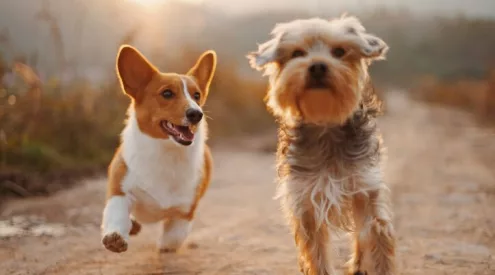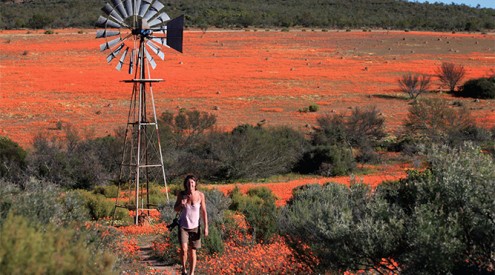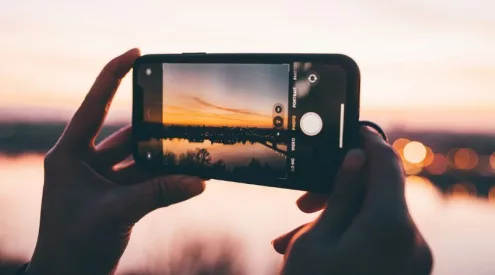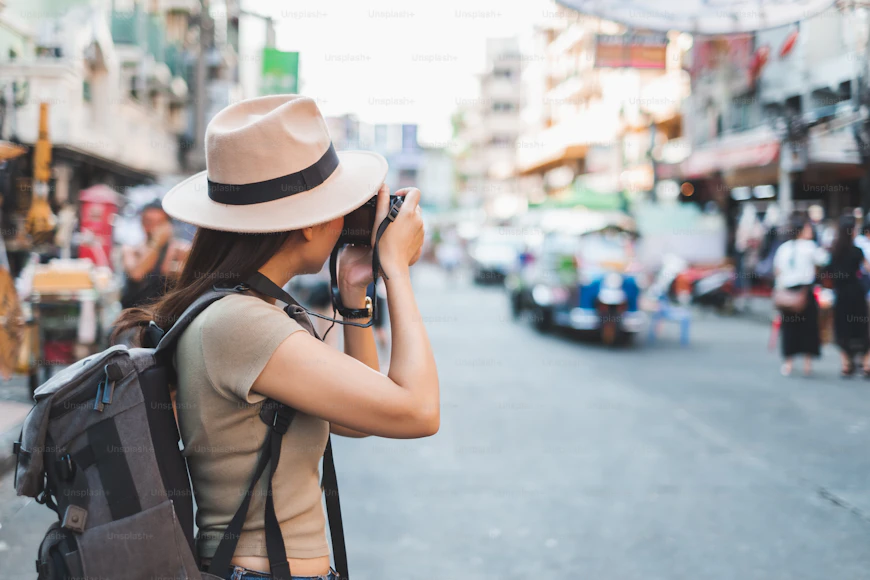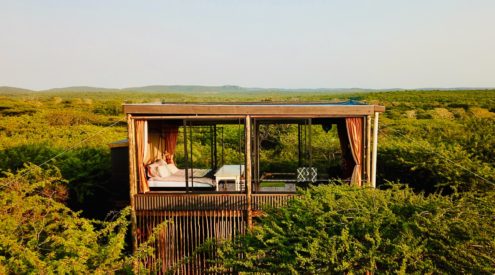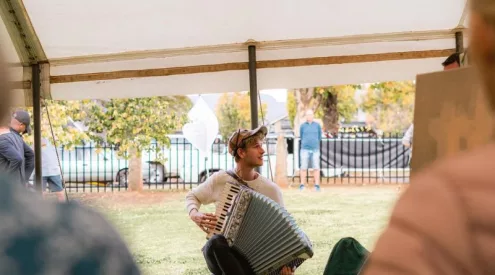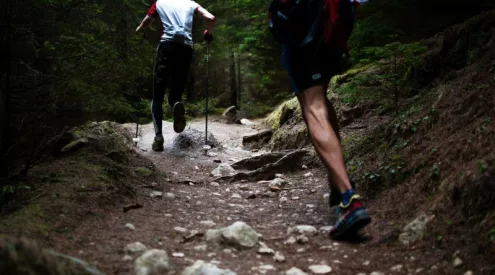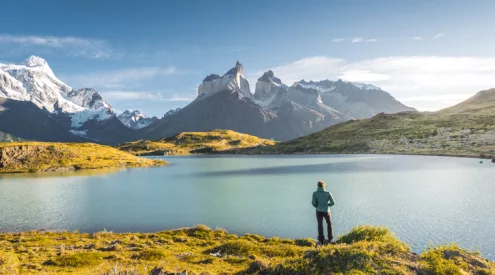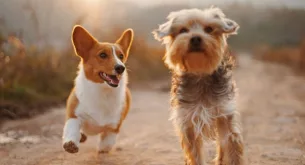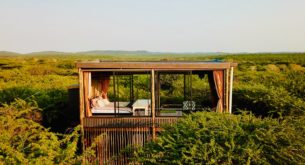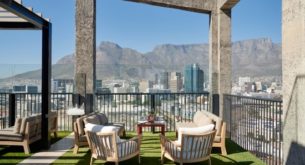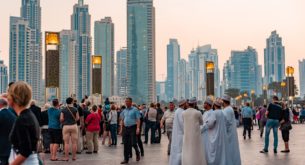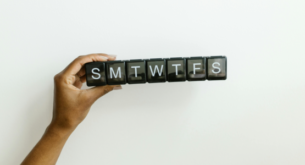Today had a historical start in two ways. One was that I got myself out of bed much earlier than I had on the entire trip (I am a night owl, not an early riser). The second is that I went to visit Moffat’s Mission Station (which is why I got out of bed earlier). Suzette insisted on being my tour guide and drove us the 1km to get to this historical site. I think she was secretly worried I may get lost trying to find it due to my previous track record!

The mission isn’t very big and we snooped through it in about an hour. It was interesting though and I before that day I never knew that Robert Moffat was the first man to translate the Bible into Setswana. He printed the first copy in 1857 and we got to see the actual printing press that was used to print this Bible and many other documents. (Trevor had come along too and got his bum dirty sitting on said press.) The printing press was given to Robert Moffat in 1831 and it travelled many, many miles from London to Kuruman. You can just imagine what a “mission” that must’ve been! I felt sorry for the oxen who had to pull the ox wagon to get it here! We also saw an ox wagon on display and a few wagon wheels – it really must’ve been an uncomfortable ride back then.

We took a gander through Mary Moffat’s house and tried to imagine how she managed to make any decent meals in that kitchen. Women were tough back then! Then of course there’s the church, which was built in 1831 and was once the largest building in the Northern Cape. Declared a National Monument in 1939, it is a fairly popular wedding venue today. I can see why – the church is quite enchanting with its original wooden beams and dung floors (which still get re-dunged three times a year). The bell no longer works and there is a sign requesting people NOT to ring the bell – which of course just makes you want to! We were well-behaved though as I had visions of yanking the rope and causing the entire bell to come crashing through the thatch and smashing all the original wooden beams. I wouldn’t have been popular!
All in all it was very interesting to wander around a place that played such an important part in our history. Of course Robert Moffat’s eldest daughter, also Mary, went on to marry David Livingstone (small world even back then) and Mr Moffat himself was a tireless man who dedicated his life to the church, the community and education (he built many schools and in fact the first school was built before the church!) I think we could do with more of those kind of men today!

Then it was off to see another one of the town’s famous sites, the Kuruman Eye, which it turns out is a giant pond filled with pretty water lilies that I unknowingly drove past twice the evening before. The actual “Eye” is a fountain that flows from an underground dolomite cave (about 271 metres long) that delivers a whopping 20 million litres of water a day! The water gushes into a pool (the pond with water lilies) and supplies the town with its water. On top of this, The Eye feeds seven irrigation channels and is thought to be the biggest natural fountain in the Southern Hemisphere. The pond is also home to an endangered species of cichlid fish, along with goldfish, carp, barbel and blue kurper. Nobody is entirely sure where all the water originally comes from, but one theory is that it comes from the Okavango Delta. There’s also musings about subterranean rivers. We didn’t stay here long (I still had to have breakfast and get on the road), but if you are in Kuruman I think a visit and a walk through the gardens could be worthwhile.

All that sightseeing had made me suitably ravenous and a full breakfast back at Kuru-Kuru Guest House followed. After much chatting and promises to return (there’s quite a lot to see and do in the area it seems) Trevor and I packed our bags and headed off in the direction of Springbok…. armed with a bag of lemons from Suzette’s tree.
If there ever was a road out of the movies, the N14 between Kuruman and Springbok is it. It’s long and straight and you can see where you’ll be in an hour’s time. The Kalahari looks as harsh as the sun is hot and you know it’s a mean stretch of highway when the tar is littered with pieces of tyre! The sociable weavers didn’t seem to be bothered though, there were masses of them flitting in and out of their giant community nests on the telephone poles. I stopped to take photographs and couldn’t believe how load their chattering was. Very sociable indeed!

After passing by mining dumps, miles of yellow tufts of grass and camel thorn trees, we came across something quite extraordinary. As we approached Upington, I wondered what lay ahead on the road that was so very green. To my astonishment, it was vineyards! Loads of them! With palm trees to boot! Who would’ve thought – wine in the Kalahari. Silly me, turns out the area is best known for its export-quality grapes, raisins and wines. The rich flood plains of the Orange River have made the area perfect for wine growing and Upington is responsible for about 40% of South Africa’s grape exports. Well I never! I can foresee some wine-tasting along the Oranjerivier Wine Route in my near future!

Our first stop was in Keimos where we stretched our legs and dipped our hands into the blissfully cool water of the irrigation canal near the Persian waterwheel, my second National Monument of the day. This well-known landmark on the main road was designed by one of the first colonists in the area and one of the few of its kind remaining the country. There was a huge vineyard plantation behind it and I have since found out that the early 1900’s the town was famous for its “Keimoes-blits” (with an even more famous kick!) that was distilled from hanepoort and crystal grapes. Needing some liquid refreshment I stopped in at the Keimos Padstal on the way out and ended up leaving with a baby Quiver tree. I love these trees and couldn’t resist getting one (at R20 it was a bargain). I was fascinated when I was given a permit for it along with the instructions on how to care for it. Apparently people steal these trees (which is sad) so the permit was to stop me from getting arrested if I was stopped by the police. It’s tiny now, so it will be a long time before it resembles the ones you see along the road between Keimos and Springbok, but it’ll be worth the wait.

A fairly short drive further along the N14 took us to Kakamas, home of a well-loved pitstop and famous landmark, Die Pink Padstal. They aren’t joking, everything in there is pink! The donkeys outside are pink, the signs are pink, the walls are pink, the tablecloths are polka-dot pink and even the fridges are pink. It’s like the inside of a giant doll’s house filled with all sorts of interesting bits and pieces. The restaurant side had closed, but I was offered a mutton pie, which I declined as it was just too hot for pie. Trevor had his photo taken sitting confidently on a pink donkey and I had a coke followed by glasses of ice cold water. It was cool in the courtyard and there was plenty to look at so it made a good pitstop for an hour or so. Actually, we we only left because they were closing for the day, otherwise we may have stayed longer. But I am glad we got to pop in at one of the most iconic padstals in South Africa that was voted a favourite amongst our readers in the January 2013 issue of Getaway!

We still had a fair way to go before reaching Springbok, but when we came to Pofadder, I just had to stop. The chances were that I may never see this town again. I took a quick look at some well-made metal sculptures that were scattered across a large plot – the owls had the biggest eyes I have ever seen and the meerkats were quite realistic. I settled on getting a metal rooster (I am a farmer’s daughter remember) and am still trying to think of a name for it. You cannot leave Poffader without something to remember it by! Actually Pofadder can be remembered for something else too – I filled up with fuel and after paying for it the elderly attendant suddenly reached into the car and gave me a hug. I have no idea why, but it’s not every day that you get a hug from your petrol attendant! Ah Pofadder, you’re full of surprises!
Needless to say after all the stops for watermills, pink padstals and baby kokerboom trees, Trevor and I only got to Naries Namakwa Retreat just outside of Springbok well after 20h00. We were ushered into the beautiful dining room of the grand Manor House and treated to three courses of fine cuisine, including salmon, rack of lamb and crème brulee. It was utterly delicious and made even more so with the calming sound of the water fountain and a cool breeze flitting through the dining area from the garden. But if I thought this was good, nothing prepared me for my abode for the night!
I had been booked into one of the rooms of the Manor House, but it turned out that one of the Namakwa Mountain Suites had become available and they decided that this girl and her bear should stay in that instead. A short drive took us to 3 domes nestled between huge boulders. I honestly couldn’t see too much of the outside as it was dark, but when I got inside my “suite” and switched the light on I gasped and almost dropped Trevor.

There before me were lodgings unlike anything I had ever seen before. Firstly the “walls” were made entirely out of thatching grass and my bed was snuggled between giant rocks. An Nguni cow skin lay on the floor and there were chocolates next to the bed. The bar fridge was stocked full of all manner of drinks and there was a basket filled with crisps and peanuts. The bathroom was an design marvel – the bath had been designed to fit around the rocks and the shower was open-plan with a series of windows offering a view of the outside world. On top of all that, they had put water in the basin and filled it with bright pink Frangipani flowers –which happen to be one of my favourite flowers. It was heaven! How I wished I hadn’t dawdled so much along the way and got here earlier to see the sunset from my posh pad!
So I resolved to set my alarm and get up early to see the sunrise instead. After all I hadn’t yet seen what lay outside, but I had seen the photos of a leopard while at the Manor House, so I figured it was safer to investigate the outside world in the morning…
Follow me on Twitter, @Rachel_CapeTown (#ZimPilgrim), email me at [email protected], or keep an eye on my blogs on the Getaway website.

